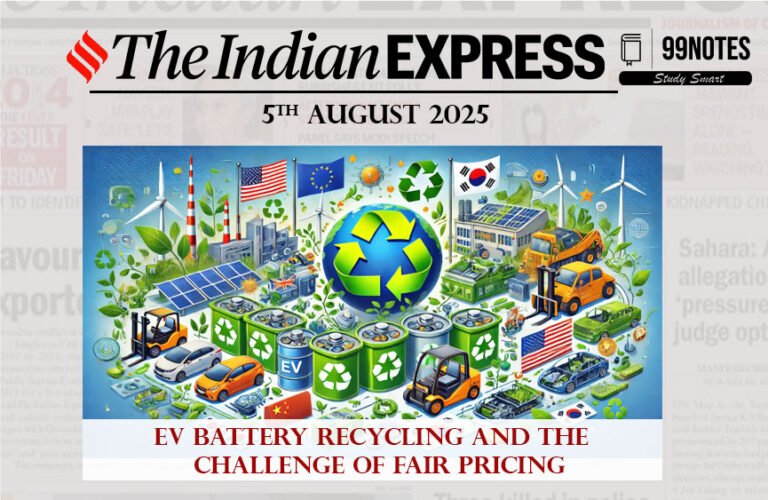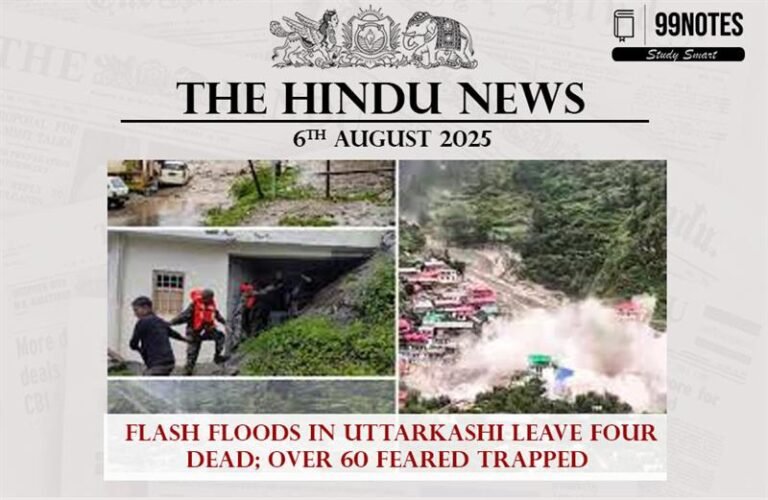27 September 2023 : Indian Express
Indian Express
27-September-2023
1) Sanatan Dharam
Context
- Political uproar has resulted from DMK politician and Minister of Tamil Nadu Udhayanidhi Stalin’s claim that Sanatan Dharma is opposed to social justice and should be eliminated.
- This article will discuss the various aspects of Sanatan Dharma
Details
The Debate Over Udhayanidhi Stalin’s Remarks
- A well-known DMK (Dravida Munnetra Kazhagam) politician made a statement that has generated a lot of heated debate. He compared “Sanatan Dharma” to societal injustice in his speech and demanded its abolition.
- He contended that this particular trait has caused caste-based divisions in society, implying that “Sanatan Dharma” upholds societal injustices.
The Self-Respect Movement’s Influence on DMK’s Origins
- The Self-Respect Movement: The DMK, a well-known political party in Tamil Nadu, may trace its ideological origins to the Self-Respect Movement, which was started in the early 20th century by EV Ramaswamy “Periyar.”
This movement, which intended to implement fundamental social reforms, was distinguished by a steadfast anti-caste and anti-religion position.
- Ideological Position: Periyar was a strong supporter of social reforms, especially those that addressed the pervasive caste-based disparities in India. His philosophy placed a strong emphasis on rationalism and rejected traditional religious beliefs.
- Dravidar Kazhagam (DK) was founded in 1938 as a result of the union of the Self-Respect Movement and the Justice Party, of which Periyar was a member. The DK was well recognized for its anti-Aryan, anti-Congress, and anti-Brahmin positions. It also demanded the founding of a Dravida nation on its own, though this demand finally lost steam.
Periyar’s Opinions on Caste and Hinduism
- Hinduism under Periyar’s Criticism: A key component of Periyar’s worldview was his criticism of Hindu religious rituals. He claimed that caste-based prejudice and marginalization were maintained by Hinduism. He was especially critical of social norms that mistreated women and people of lower castes.
- Religion and Caste: According to Periyar, the existence of the religion itself was directly related to the dominance of particular caste groupings in Hindu society. He perceived religion as a weapon of social power used to favor the Brahmin class and maintain inequalities.
- Support for Eliminating Religion: One of Periyar’s most extreme ideas was the demand for the complete elimination of religion. He believed that religion stood in the way of women and people from lower castes gaining true equality and freedom.
- Political Influence: Periyar’s philosophy had a significant impact on Tamil Nadu’s political climate. His opinions had an impact on DMK leaders like M. Karunanidhi, who rose to prominence. In their political careers, they persisted in supporting rationalism and social justice.
The meaning and origin of Sanatan Dharma
- Sanatan Dharma is a Sanskrit phrase that has several different translations, including “eternal law,” “eternal religion,” “unshakeable, venerable order,” and “ancient and continuing guideline.” These translations highlight the idea’s enduring and fundamental elements while illustrating the concept’s complex character.
- Connection to the Bhagavad Gita: The phrase “Sanatan Dharma” became well-known in this respected Hindu literature. The idea of “Sanatan Dharma” is associated with the soul’s eternalism and the eternal truths of life in this context.
Central Ideas of Sanatan Dharma
- Rebirth and the Eternal Soul: The idea of rebirth (also known as reincarnation or samsara) and the idea that the soul (Atman) is eternal are both core principles of Sanatan Dharma. The soul, which is said to be immortal, experiences a cycle of births and deaths until achieving freedom (moksha), according to this theory.
- Included in Several Traditions: The core ideas of Sanatan Dharma are shared by Buddhism, Jainism, and Jainism in addition to Hinduism. The idea of “Sanatan Dharma” unites these traditions since they all have the same views on the everlasting soul and the cycle of reincarnation.
- It is crucial to make it clear that Sanatan Dharma does not apply to other religions, such as Judaism, Christianity, or Islam, because these faiths do not share the notion of rebirth and the existence of an eternal soul. Theological philosophies and historical roots vary among these religions.
Sanatan Dharma’s emergence as a term
- Prominence in the late 19th century: The phrase “Sanatan Dharma” rose to prominence in that era. This change in meaning and usage can be ascribed to a number of historical and cultural developments at that time.
- Response to Reform Movements: In the late 19th century, social reformers and missionaries such as the Brahmo Samaj and Arya Samaj began to lead reform movements. As a reaction to these developments, “Sanatan Dharma” started to be employed as a representation of Hindu conservatism.
People who upheld Sanatan Dharma
- Prominent individuals: In the latter half of the 19th century, individuals like Pandit Shraddha Ram and Pandit Din Dayal Sharma were crucial in maintaining ancient Hindu customs and beliefs. They argued for the protection of what they considered to be the fundamental principles of Sanatan Dharma.
- Formation of Organizations: Groups like the “Sanatan Dharm Sabha” and the “Bharat Dharma Mahamandal” were founded in order to protect and advance Sanatan Dharma.
- These groups sought to organize and unify adherents of traditional Hinduism.
Census uses “Sanatan-Dharmi”
- Census Report from 1891: The phrase “sanatan-dharmi” appeared in old writings like the Punjab Census Report from 1891. It was used to classify people who followed traditional Hindu customs and beliefs.
- Contrast with Arya Samaj: The term “Sanatan-dharmi” was frequently used to criticize adherents of the reformist Arya Samaj, which pushed for modifications to Hindu customs.
- This division between conservative and reformist Hindu organisations at the time was highlighted by this categorisation.
2) Quota is not enough
Context:
- India began its road towards becoming a democratic republic on a positive note because the Constitution was written with political equality for men and women at its core.
- However, men now make up a disproportionate amount of the political class in our country.
- The recent passage of women’s reservation bill is indeed a historic moment but its implementation is yet to be seen.
- This article will discuss and compare the position of India with other countries with respect to women’s representation in politics.
Statistics:
- 2% of Lok Sabha members were female in 1997 (the most recent year for which comparable global figures are available).
- This percentage has doubled to 15.2 percent today.
- Even though there has been development, it has been far slower than the worldwide average and has also been sluggish.
- According to the Inter-Parliamentary Union (IPU), a global association of national parliaments, the proportion of women MPs has increased from 12.7% to 26.7% during the same time period.
- As a result, whereas India was ranked 94 out of 179 countries in 1997, it has dropped numerous positions since then and is now ranked 141 out of 185.
- If the recommendations that the Bill proposes were to take effect right away and this share increased to 33 percent, we would be ranked number 54, just below our neighbor Nepal.
- However, we do not yet know when the Bill will take effect. The 33 percent quota is unlikely to place us in the top 50 countries, or even close to them, if it takes another ten years or more.
Other countries which are making efforts to improve political representation of women.
- India is not the only country making an effort to improve the political representation of women.
- In comparison to the advancements some other nations have achieved, what may seem like a radical stride to us is actually a tiny one.
- Just last year, Sierra Leone held its first elections following the passage of a new law requiring parties to field at least 30% female candidates, while Mongolia increased the female candidate quota from 20% to 30%.
- In fact, according to data provided by the International Institute for Democracy and Electoral Assistance, 69 nations have some type of legally mandated candidate-level quotas for women in the lower (or single) house of Parliament.
- Like India, another 30 nations reserve seats for women.
- A prime example is Iceland, where women make up 47.6% of the parliament.
Electoral Quotas for women:
- As some parties in Australia had voluntary quotas, an IPU analysis found that women’s representation increased by roughly 8 percentage points in the election of 2022.
- Every year, the IPU has found in its analysis of parliamentary elections around the world that electoral quotas for women had the greatest impact on the proportion of women who are elected.
- But it’s important to keep in mind that this is only achievable if the quotas are applied in the appropriate way.
- They might not be able to achieve much if they are only made to check boxes. For instance, Kazakhstan implemented a 30% quota for both women and young people in 2020. In fact, there were more women running in the subsequent election in 2021, but due to a clear design flaw, this had no impact on the proportion of women who were elected.
- On the other hand, regulations have been changed over time in Mexico and Costa Rica to make sure that parties do not run women in races they are certain to lose.
- In actuality, Mexico’s parliament is balanced, but Costa Rica’s parliament includes 47.4% female lawmakers.
India’s Scenario:
- As the electoral process and quota system in India are different, the potential of becoming a ceiling rather than a floor is one difficulty with reservations, though.
- Political parties’ openness and all stakeholders’ attention to detail are what matter.
- The importance of India’s political parties in this situation cannot be overstated. Their poor track record here speaks for itself. Nothing has prevented them from nominating more women candidates throughout the years.
- But on average, just 10% of candidates in the last five years’ assembly elections and only 6% to 9% of candidates in the Lok Sabha elections since 2000 have been female.
- Since the beginning, India has had a universal adult franchise. It also boasts one of the greatest rates of female representation at the municipal level and has seen women ascend to the highest levels of political hierarchies considerably earlier than many other nations.
Way Forward:
- India now has the chance and capability to create more motivating precedents.
- Political parties need to improve in this area and aid in helping the nation reach its full potential.
- In light of this, the current period, in which the Women’s Reservation Bill, formerly in limbo, has become a reality, is genuinely historic.
- The excitement of the occasion has been diminished by the lack of a defined schedule, but it still holds great promise and potential.
For Enquiry

28 September 2023 : Daily Quiz

28 September 2023 : Daily Answer Writing

28 September 2023 : PIB

28 September 2023 : Daily Current Affair

28 September 2023 : The Hindu Editorial Notes PDF

27 September 2023 : Daily Quiz

27 September 2023 : Daily Answer Writing

27 September 2023 : Indian Express

27 September 2023 : PIB

27 September 2023 : Daily Current Affair
Daily Quiz 28 September 2023 : Daily Quiz 28 Sep 2023 : Daily Quiz…
mains answer writing 28 September 2023 : Daily Answer Writing Mains Answer Writing
One of the key components of these exams is the written test, which consists of…
PIB 28 September 2023 : PIB PRESS INFORMATION BUREAU
28-September -2023
Daily Current Affairs For UPSC ,The PIB ( Press Information…
Daily Current Affairs 28 September 2023 : Daily Current Affair Daily Current Affairs
28-September-2023
1. Hit jobs on foreign soil not India’s policy: Jaishankar
Topic:…
September- The Hindu Editorial 28 September 2023 : The Hindu Editorial Notes PDF The Hindu Editorial
28-September-2023
1. The G-20’s screen over ‘mazdoors’, their rights.
Topic:…
Daily Quiz 27 September 2023 : Daily Quiz 27 Sep 2023 : Daily Quiz…
mains answer writing 27 September 2023 : Daily Answer Writing Mains Answer Writing
One of the key components of these exams is the written test, which consists of…
Indian Express 27 September 2023 : Indian Express Indian Express
27-September-2023
The Indian Express, CSE candidates can stay informed about current…
PIB 27 September 2023 : PIB PRESS INFORMATION BUREAU
27-September -2023
Daily Current Affairs For UPSC ,The PIB ( Press Information…
Daily Current Affairs 27 September 2023 : Daily Current Affair Daily Current Affairs
27-September-2023
Daily Current Affairs For UPSC ,Daily Current affairs of The…




